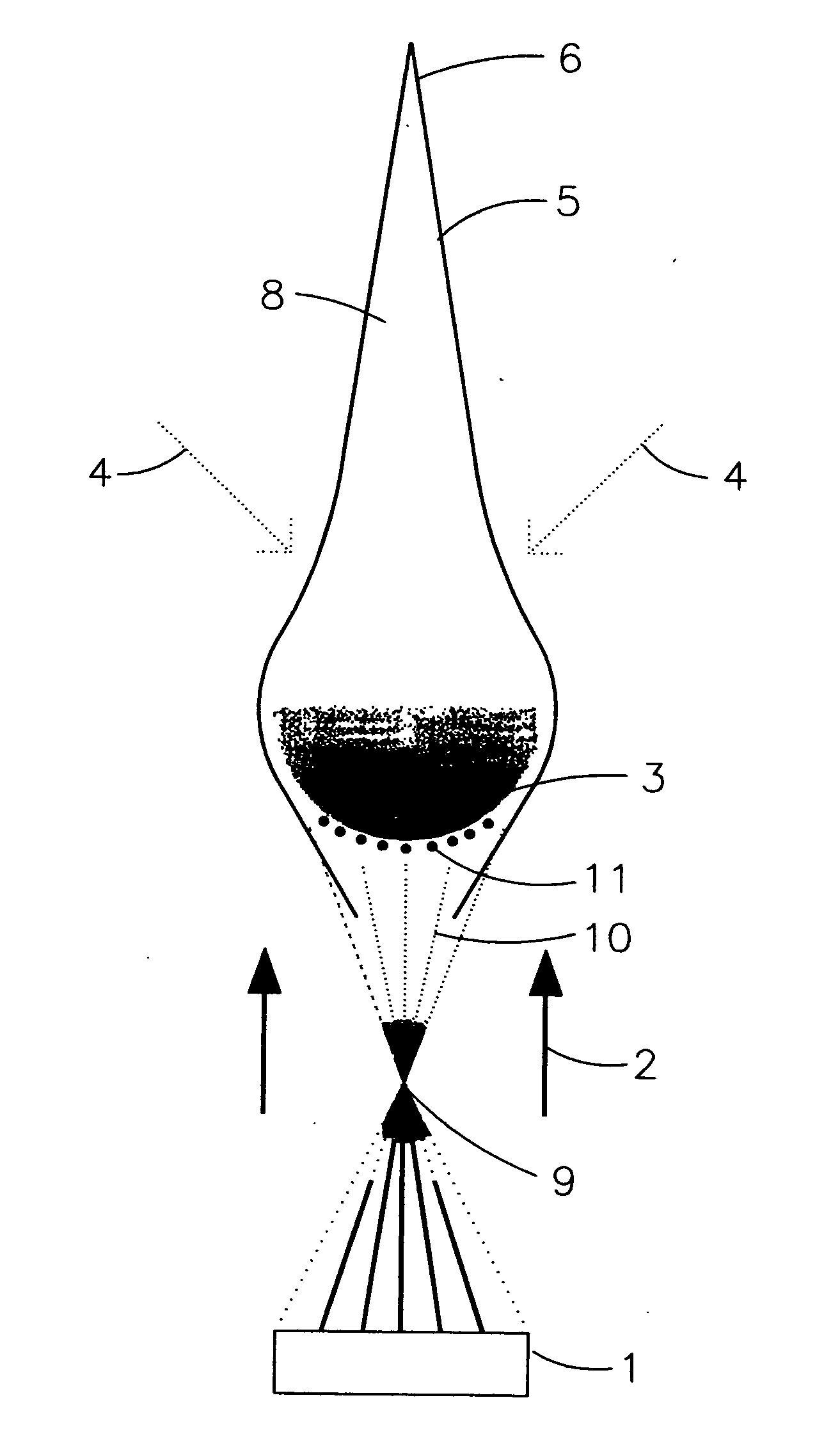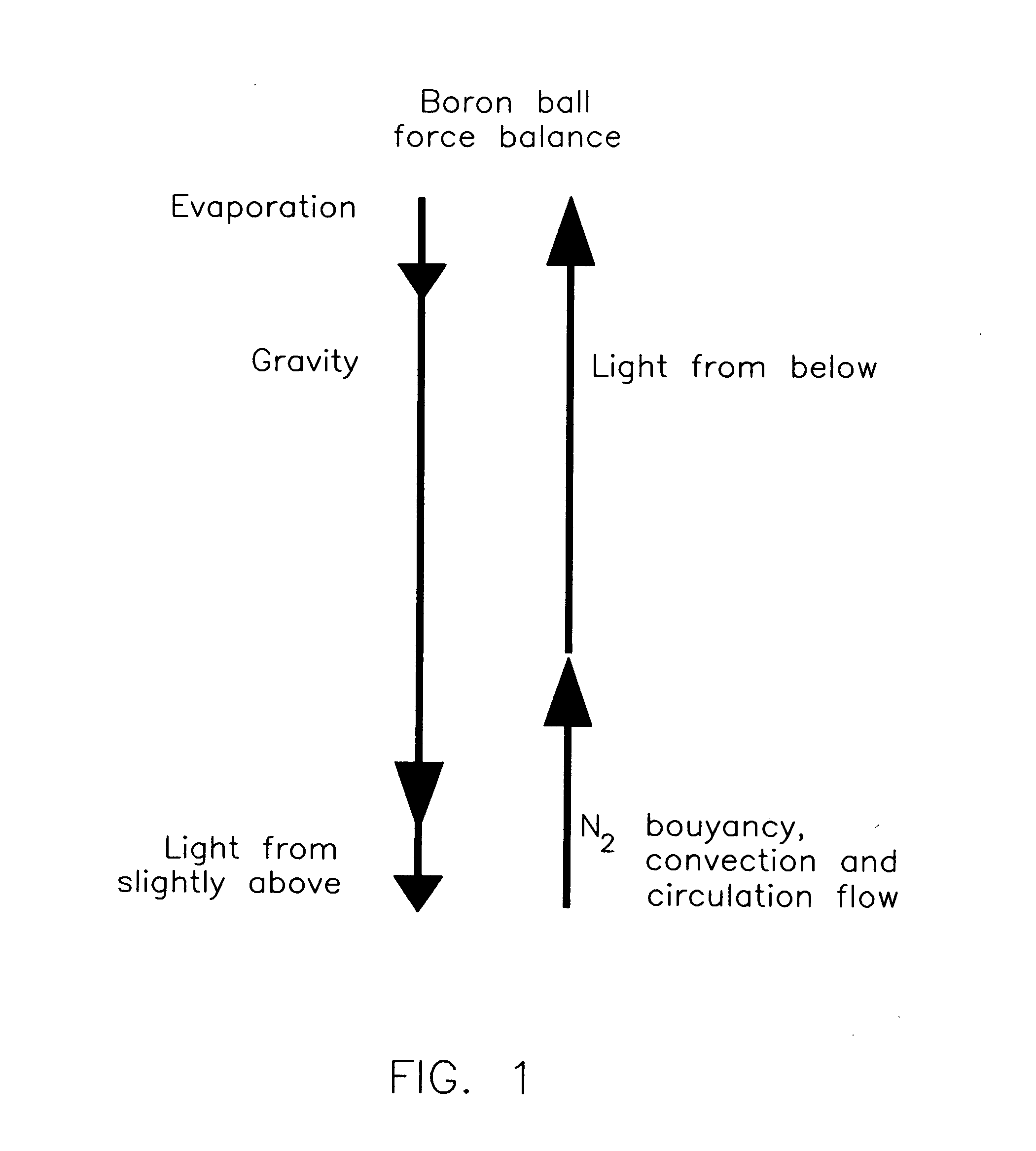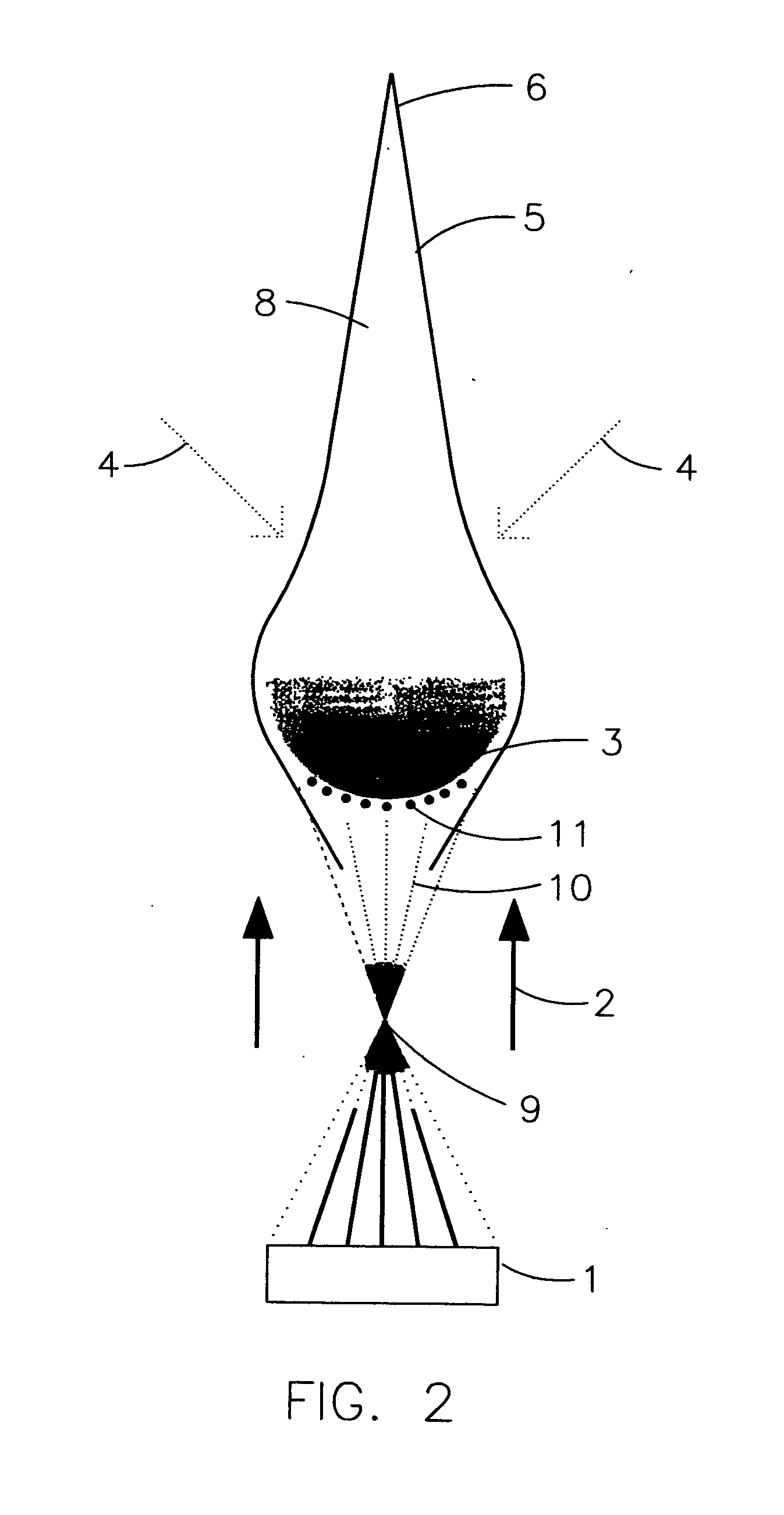Efficient boron nitride nanotube formation via combined laser-gas flow levitation
a technology of boron nitride and laser gas flow, which is applied in the field of nanotube production, can solve the problems of low energy efficiency of pressurized vapor/condenser method, neither fw-bnnts nor single wall carbon nanotubes are widely used in aerospace manufacturing and similar industries
- Summary
- Abstract
- Description
- Claims
- Application Information
AI Technical Summary
Benefits of technology
Problems solved by technology
Method used
Image
Examples
example 1
[0038]The following example is provided for illustrative purposes. For an example using a 1.5 mm diameter boron ball target, the downward force of gravity is about 3.5×10−5 N. If an 8 kW laser is used to produce the light that impinges on the under side of the boron ball target the available upward force of the light is about 2.5×10−5 N assuming that the force due to the reflection term roughly cancels the angular effect.
[0039]To balance the force in this example, the upward force needed for the gas buoyancy and flow and heating convection terms approaches 1.0×10−5 N. The buoyancy component of the gas flow would be roughly equal to this at 5,000 psi so the pressure is kept below this level. For operational reasons (including safety) relying more on flow rather than buoyancy indicates that pressures of about 100 to about 2,000 psi can be used with suitable flow. As the laser power and hence force of the laser beam impinging on the bottom of the boron ball target can be rapidly change...
PUM
| Property | Measurement | Unit |
|---|---|---|
| pressure | aaaaa | aaaaa |
| temperature | aaaaa | aaaaa |
| acceleration | aaaaa | aaaaa |
Abstract
Description
Claims
Application Information
 Login to View More
Login to View More - R&D
- Intellectual Property
- Life Sciences
- Materials
- Tech Scout
- Unparalleled Data Quality
- Higher Quality Content
- 60% Fewer Hallucinations
Browse by: Latest US Patents, China's latest patents, Technical Efficacy Thesaurus, Application Domain, Technology Topic, Popular Technical Reports.
© 2025 PatSnap. All rights reserved.Legal|Privacy policy|Modern Slavery Act Transparency Statement|Sitemap|About US| Contact US: help@patsnap.com



